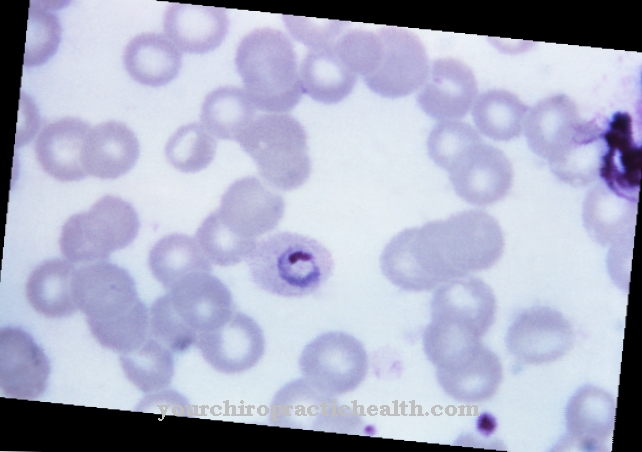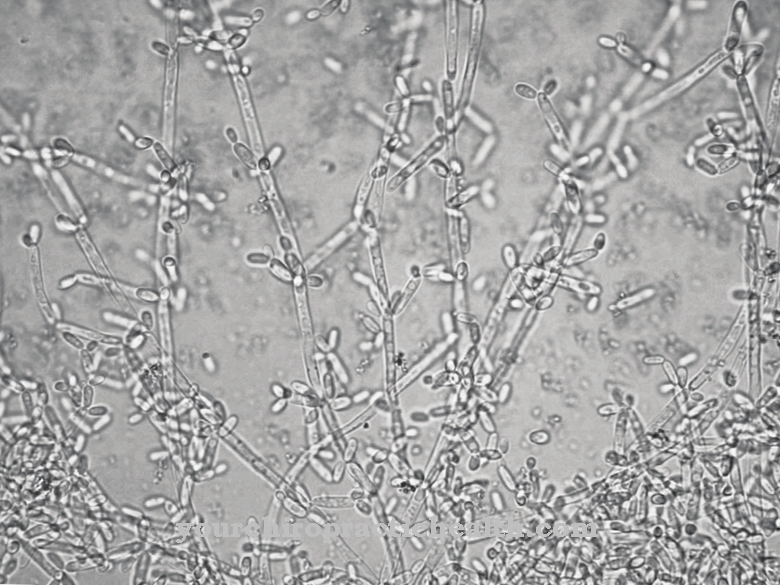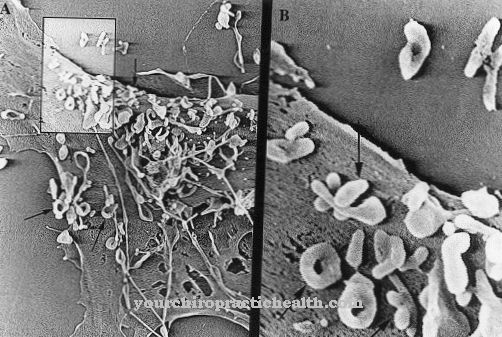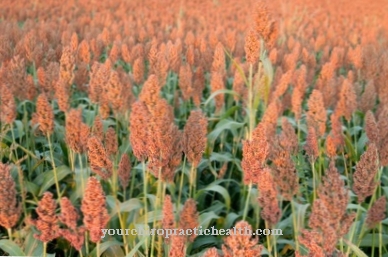Of the Purple brown ergot mushroom (Claviceps purpurea) is a hose fungus that grows parasitically on host plants such as rye, wheat, oats and barley. It is often found on wild grasses such as couch grass, lolch and field foxtail grass. There it can survive on the field after the grain harvest and spread again with the next sowing. The ergot fungus produces purple to black sclerotia (permanent mycelia), which are called mother grains. This name is explained by the earlier common use in births. Various ingredients helped to induce labor. At times the poisonous mushroom was even grown to be used for abortions. The terms are common regionally Mendicant monk, Starvation grain and Red club head. In the fields, the ripe sclerotia fall to the ground together with the grains and thus get through the winter. Claviceps purpurea is widespread in areas with a temperate climate.
What is claviceps purpurea?
The ergot fungus can reproduce both sexually and asexually. During the growing season, a sclerotium gives rise to several stalked fruiting bodies that have a head-like shape. They are formed by fusing several thread-like fungal cells. The fruit bodies develop numerous tubes (asci) inside, in which the ascospores (seeds) are produced. As the grass and corn bloom begins, the ascospores are released and spread by the wind. They penetrate the ovary through the stigma of unfertilized flowers. This sexual reproduction is defined as primary infection.
In the case of (asexual) secondary infection, the conidiospores (conidia) develop from the mycelium of the ergot fungus through constriction of cells. They are released through contact from ear to ear as well as rain and wind.
Insects that are attracted by so-called honeydew also play an important role. This is a sweet liquid that the purple-brown ergot fungus forms by decomposing grain seeds. The conidiospores finally get into the fruiting bodies of, for example, flowering grasses like the ascospores.
Occurrence, Distribution & Properties
In the fruiting body of the colonized plant, the spores germinate into a fungal mycelium, which eventually breaks down the ovary. The honeydew emerges from a newly formed soft mass. Later the mycelium matures to a horn-like sclerotium, which gets the typical dark purple appearance.
Instead of the seeds, the grasses or plants infected by the ergot fungus then only bring out sclerotia. However, they contain alkaloids (“plant ash”) which are toxic to the human organism. In terms of their effects, they can be compared with morphine, strychnine and solanine.
If a person ingests large amounts of sclerotia, limbs may die off as certain blood vessels are constricted. Muscle spasms may also occur due to disorders of the central nervous system. Stomach and intestinal diseases are also likely.
Even in the Middle Ages, when sclerotia were ground to flour together with the grains of cereal due to ignorance of the risks, terrible consequences of the toxic substances could be registered. Because of these hazards, limit values for the sclerotia content in cereals were set a long time ago. However, with today's standard cleaning methods for grain, the toxic substances can be sorted out with great certainty in the mills. However, there are still dangers for domestic animals and farm animals when they graze on grassy areas that may have been exposed to ergot.
Meaning & function
The sclerotia of the purple-brown ergot fungus are usually slightly curved, are up to six centimeters long and often protrude a clear piece from the husks of the cereal plant. The ears or panicles attacked by black mushrooms are very sticky because of the secreted honeydew. The sclerotia can withstand cold and drought relatively well.
After surviving the winter in or on the ground, they germinate when the grass is in bloom. Ergot fungus has the best chance of spreading in rainy and cool weather. On the other hand, very hot and dry conditions are dangerous for the grain, as more flowers remain unfertilized. Then they can become infected by Claviceps purpurea.
There is also a great risk of contagion from already infested grasses on the edges of the grain fields. If cereal stocks bloom unevenly and, for example, rye follows rye in the fruit, the spread of ergot is facilitated.
Illnesses & ailments
Nowadays it is medically proven that alkaloids of the ergot fungus can cause intestinal cramps, hallucinations and the death of fingers and toes. These abnormalities are triggered by circulatory disorders. From ancient times the term Antoniusfeuer was used for this pinching off of limbs. The word ergot brandy was added later. Technically, the clinical picture is called ergotism today.
The metabolism of an adult person is so severely impaired by the consumption of five to ten grams of fresh ergot that respiratory paralysis and circulatory failure with possibly fatal outcome follow. Reliable studies warn of damage to human health if around ten milligrams of ergot alkaloids occur per kilogram of flour. The legal limit for safety is two milligrams per kilogram.
The alkaloids can also be used beneficially in medicine. For example, they have hemostatic properties during and after childbirth. They also help against orthostatic hypotension (low blood pressure) and dizziness immediately after getting up, as well as migraines. The so-called lysergic acid, with which the drug LSD can be produced, can be obtained from the purple-brown ergot fungus.









.jpg)













.jpg)



.jpg)
